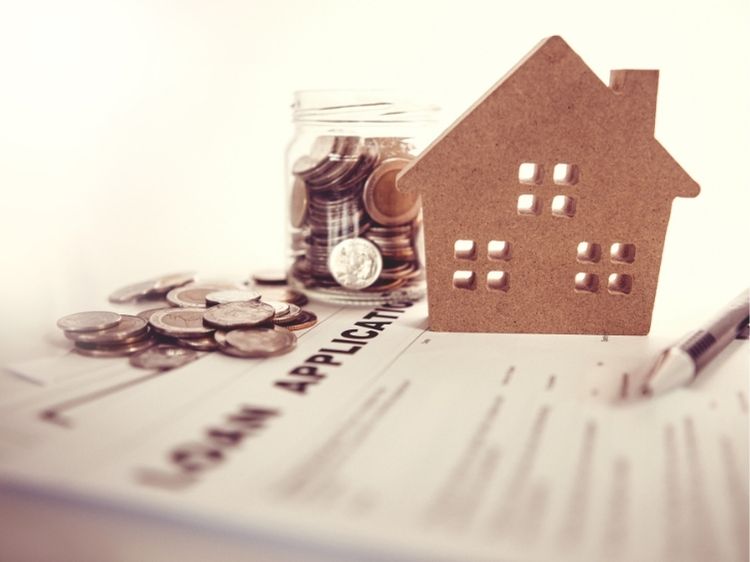How to tap your home’s value with a Home Equity Loan (or HELOC) vs. Cash Out Refinance
There are many ways to access the equity in your home. These include a home equity loan, a line of credit or a cash-out refinance. These are some things to keep in mind when choosing the right option for you.
There are three options to convert your home’s equity into cash: home equity loans, home equity credit lines (HELOC), and cash-out refinances. These are all ways to increase your home’s worth to fund other goals like home improvement or consolidating debt.
Borrowing against your home equity is a way to get cash. This is the difference between your current home value and what you owe on your mortgage.
These loans may look similar but they are not the same. A home equity loan, or HELOC, will require you to make a second payment if you have a mortgage. A cash-out refinance replaces your existing mortgage with a new one with a term, interest rate, and monthly payment.
Check your home equity first
Home equity is created by paying off your home loan. It can also be increased through property appreciation. You can convert your equity into cash by selling your home. If you want to tap into these funds, but you don’t have to sell your house, you can borrow against it with a home equity loan or line of credit, or a cash-out refinance.
You must first have enough equity in your home.
Calculate the value of your home and calculate how much mortgage debt you still owe to determine how much equity you have. The equity in your home is determined if the difference between these two numbers is positive. If you owe more on your home than it is worth, then you are not eligible for a cash out refinance, home equity loan, or HELOC.
Understanding your options: Home equity loans and HELOCs vs. Cash-out refinances
Lenders may have different requirements, but you could be eligible for these loans if your home equity is at least 15%. These are the basics:
Home equity loans
Home equity loans allow you to borrow a lump amount that you will then repay at a fixed interest rate. You will make monthly payments on the loan in addition to your regular mortgage payments. One exception: A home equity loan would not be considered your primary mortgage if your house is fully paid off.
Home equity line credit (HELOC).
Home equity lines of credit are also considered a second mortgage. They require a monthly additional payment. Instead of borrowing all at once, however, you can borrow what you need during the draw period. The repayment period allows you to repay the loan amount and interest. HELOCs are not like home equity loans. They usually have an adjustable rate so that your monthly payments can vary.
Refinance with cash-out
Cash-out refinances replace your mortgage with a new loan that is greater than your current owe. The “cash out” is the difference between your current loan amount and your new loan amount. Although cash-out refinance rates are typically higher than those for rate or term refinances (which is more common than the rate for rate and rate refinances), your interest rate will likely be lower than that of a HELOC or home equity loan.
- Similarity of home equity loans, HELOCs, and cash-out refinances
- To be eligible for any of these loans, you will typically need an after-transaction ratio of less than 90%.
- The money can be used however you like, but it is recommended that homeowners borrow only against their home equity to make home improvements or consolidate debt.
- Failure to make your payments could result in foreclosure of your home.
What home equity loans and HELOCs differ from cash-out refinances
Cash-out refinances have lower interest rates than home equity loans and HELOCs.
Cash-out refinances have higher closing costs because a refinance is basically a new mortgage. HELOCs and home equity loans have lower closing costs.
A cash-out refi is one larger loan. A home equity loan or line credit, on the other hand, is a loan that you have in addition to your primary mortgage.
FAQ about home equity loans, HELOCs, and cash-out refinances
Is it better for me to refinance or get a second mortgage?
Here are some things to consider when weighing a second mortgage, either a home equity loan, or HELOC, against a cash out refinance.
- Current mortgage rates If you are looking for a lower interest rate and intend to remain in your home long enough to reach your break-even point then a cash-out mortgage may be a better option than a second mortgage.
- How much money you would like to borrow. Borrowing very little. You may prefer a home equity loan because you don’t have to pay large refinance costs, but you will still get the money as a lump sum. If you only need a little liquidity, home equity loans and HELOCs can be a good option. A low-interest credit card, or a personal loan, might suffice.
- Your plans to borrow the money. A HELOC is a good option if you aren’t sure how much you will need or how long your renovation will take. If your plans for improvement are not clear, a HELOC may be a good option.
- The length of your stay in the house. A home equity loan may be more beneficial than refinancing, getting a HELOC, or refinancing. Although a cash-out refinance may have a lower interest rate than a cash-out refinance, it will take many years to recover the costs you paid upfront. HELOCs have a longer life expectancy — the draw period is 10 years, and repayment takes 20 years. If you decide to sell your home before paying the HELOC back, the remaining balance will be due in a lump sum.
What is the maximum amount you can borrow?
The amount that you can borrow depends on whether you are applying for a home equity loan or a HELOC. How much you can borrow from a lender and at what interest rate will depend on your credit score, home equity, debt-to income ratio, and loan-to value ratio.
You can’t borrow more than the value of your home. Your total loan debt should not exceed 90% of the value of your home.
What time do you have the obligation to repay it?
As with a primary mortgage, cash-out refis may be extended for up to 30 years. You have the option to either keep your original term, reduce your term length, or increase your term. A cash-out refinance may result in higher monthly payments, particularly if the new loan is shorter or for a larger amount than your original mortgage.
A HELOC doesn’t usually require payments during the draw period. Although the draw period length can vary, 10 years is the most common. You might be able to make monthly payments towards the interest during the draw period. After you reach the HELOC repayment period, you will make payments on both the principal as well as the interest. A HELOC’s repayment period is longer than its draw period. It is a standard 20-year loan. When combined with the draw period, it is a 30-year loan.
The repayment terms for home equity loans are usually shorter and no more than 15 years. The total interest that you pay will be lower if you keep the term short and you are able to afford the payments.
Is the income taxable?
You can only realize your home equity when you sell your house. The cash you receive from a cash-out refinance or HELOC, as well as a home equity loan, is not taxable. It’s money that you borrow and must repay.
Is the interest paid taxable?
HELOCs and home equity loans are tax-deductible as long as they are used to improve your home. The IRS states that the proceeds must be used to “buy or build” the taxpayer’s home, which is the purpose of the loan.
A cash-out refinance can be treated as any other first-lien mortgage. You can deduct the interest on the first $750,000 if you itemize your deductions for 2020.
Related Articles:
https://www.whatloan.us/best-home-equity-loan
https://www.loanfund.us/risks-of-home-equity-loans
https://www.giveloan.co.uk/closing-costs-for-a-home-equity-loan
https://www.loansure.us/homes-value-with-a-home-equity-loan
https://www.loanproof.co.uk/reasons-for-a-home-equity-loan
https://www.loanwant.co.uk/what-is-a-home-equity-loan
https://www.orderloan.co.uk/use-a-home-equity-loan
https://www.basicloan.us/uses-for-a-home-equity-mortgage

